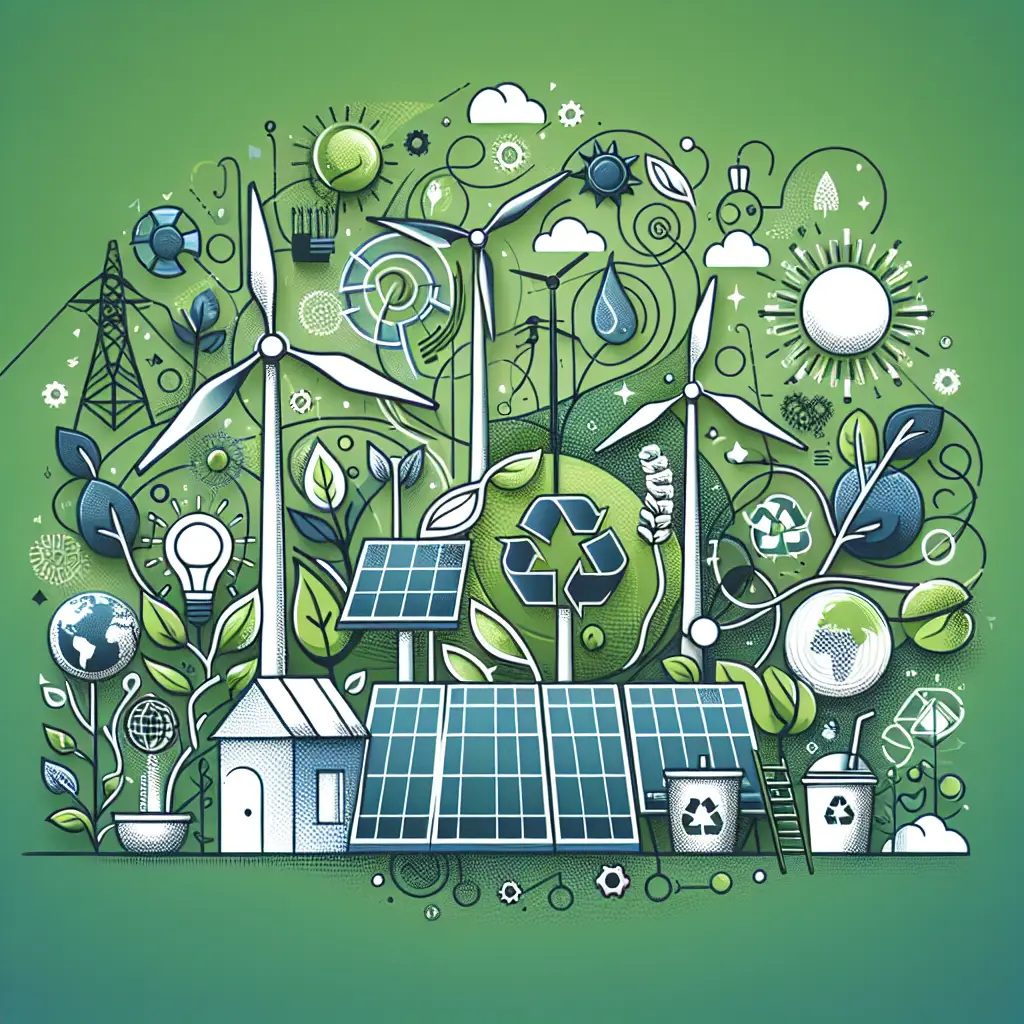The Ultimate Guide to Sustainable Living: Practical Steps for a Greener Future
Sustainable living isn’t just a trendy phrase—it’s becoming a necessity in today’s rapidly changing world. As awareness of the environmental impact of our daily choices grows, more people are seeking practical ways to minimize their ecological footprint. If you’re new to the concept of sustainability, or you’re passionate about deepening your commitment, this ultimate guide will arm you with the knowledge and actionable steps to truly make a difference.
Understanding Sustainable Living
At its core, sustainable living is about making choices that aim to reduce individual and collective environmental impact. This involves managing resources so they meet current needs without compromising the ability of future generations to meet their own. While the concept can seem overwhelming at first, the beauty of sustainability lies in the myriad small, simple actions that add up to create meaningful change.
Why Does Sustainable Living Matter?
The world is facing numerous environmental challenges—climate change, resource depletion, plastic pollution, and loss of biodiversity, to name a few. Our consumption patterns, energy use, and lifestyle choices all contribute to these issues. By embracing sustainable living, we can:
- Reduce waste and pollution
- Conserve natural resources
- Support healthier ecosystems
- Save money in the long run
- Inspire others to make positive changes
Step-by-Step Plan for a Greener Life
Let’s break it down into manageable categories. Each section offers practical strategies you can start using today.
1. Rethinking Consumption: Buy Less, Choose Wisely
The most sustainable product is the one you don’t buy. But when you do need something, consider the following:
- Buy Quality Over Quantity: Durable products last longer, reducing the frequency of replacements.
- Shop Secondhand: Thrift stores and online marketplaces are treasure troves for gently used goods.
- Choose Eco-Friendly Brands: Support companies with ethical, transparent supply chains and eco-conscious practices.
- Rent or Borrow: Not everything needs to be owned. For occasional items, renting or borrowing can save money and resources.
2. Waste Reduction: The 5 Rs in Action
You’ve probably heard of “Reduce, Reuse, Recycle”—but two more Rs can help: Refuse and Rot.
- Refuse: Say no to single-use plastics, unnecessary packaging, and freebies you’ll never use.
- Reduce: Simplify your life and needs. Avoid the “throwaway culture.”
- Reuse: Opt for reusable bags, water bottles, coffee cups, cloth napkins, and containers.
- Repurpose: Get creative. Old jars become storage; worn shirts become cleaning rags.
- Recycle: Learn what your municipality actually recycles. Rinse and sort accordingly.
- Rot: Compost food scraps and yard waste to return nutrients to the earth.
3. Food Choices: Eat with the Planet in Mind
Our food system has a huge environmental footprint. Here’s how to make more sustainable choices:
- Eat More Plant-Based Meals: Even reducing your meat and dairy intake can make a big difference.
- Support Local and Seasonal: Farmers markets and CSAs provide fresh food with fewer food miles.
- Reduce Food Waste: Meal-plan, store food properly, and know “best by” labels aren’t always about safety.
- Grow Your Own: Start with a few herbs on the windowsill or a tomato plant on the balcony.
4. Energy Efficiency: Power Down, Save Up
Changes at home can save energy and reduce your bills:
- Switch to LEDs: LED bulbs use far less energy than incandescents.
- Unplug Devices: Many electronics draw power even when off.
- Install Smart Thermostats: They optimize heating and cooling schedules.
- Weatherproof Your Home: Insulate, seal gaps, and use curtains to regulate temperature.
- Explore Renewable Energy: If possible, opt for green power from your utility or install solar panels.
5. Greener Transportation: Rethinking How We Get Around
Transportation emissions are a major contributor to climate change. Consider these tips:
- Walk or Bike for Short Trips: Healthier for you and the environment.
- Carpool or Use Public Transit: Reduces per-person emissions.
- Consider Electric Vehicles: As prices fall and infrastructure improves, EVs are increasingly accessible.
- Fly Less: Consider trains or buses for regional travel, and offset flights when you must fly.
6. Water Conservation: Every Drop Counts
Water is invaluable, yet often taken for granted. Try these techniques:
- Fix Leaks Promptly: A dripping tap wastes more than you think.
- Install Low-Flow Fixtures: For showers, toilets, and faucets.
- Collect Rainwater: Use it to water plants or wash your car.
- Shorten Showers: Every minute adds up.
- Choose Drought-Resistant Plants: Especially if you live in an arid region.
7. Green Cleaning: Natural and Non-Toxic
Conventional cleaners can introduce toxins into your home and waterways. Switch to:
- DIY Cleaners: Simple ingredients like vinegar, baking soda, and castile soap work wonders.
- Eco-Certified Products: Look for third-party certifications.
- Reusable Cleaning Rags: Replace paper towels with cloth alternatives.
8. Conscious Fashion: Wear the Change
The fashion industry is among the worst polluters. Sustainable style means:
- Buy Less, Choose Well: Invest in timeless, quality items.
- Check Labels: Support brands with ethical sourcing and eco-friendly materials.
- Clothing Swaps: Refresh your wardrobe without buying new.
- Care for Your Clothing: Wash less often, use cold water, line dry when possible.
9. Minimalist Mindset: Embrace Quality of Life
Living with less creates more room for what matters—experiences over possessions. It also means:
- Less Cleaning and Maintenance
- Reduced Clutter and Stress
- Easier Moves and Organization
Try regular decluttering and donate items rather than tossing them.
10. Advocate and Educate
Change is multiplied through community. Share your journey:
- Start with Family and Friends: Small suggestions can spark big shifts.
- Engage Locally: Support a recycling drive or join a clean-up effort.
- Vote with Your Wallet and Ballot: Support eco-friendly companies and policies.
Measuring Your Progress
Track your efforts to stay motivated:
- Calculate Your Carbon Footprint: Several online tools allow you to measure your impact.
- Keep a Journal: Note what’s working, what isn’t, and set new goals.
- Celebrate Successes: Every step counts—acknowledge your achievements!
Common Challenges and How to Overcome Them
Feeling Overwhelmed
Start small. Pick one area—like reducing plastic or conserving energy—and master it before moving on.
Cost Concerns
Sustainable products may seem pricier upfront. However, they’re often more cost-effective in the long-run through savings on utilities, groceries, and replacement costs.
Lack of Support
Change is easiest with company. Find online or local communities for inspiration and accountability.
Take Action Today
Sustainable living is a journey, not a destination. It’s about intentional choices—living with a lighter impact on the planet and a fuller sense of purpose.
Ready to get started? Here are some actionable steps:
- Pick one room in your home and identify areas to improve (energy, waste, water, cleaning products).
- Choose a reusable substitution to replace one single-use item per week.
- Share this article with a friend or on social media to spread the momentum!
Together, we can make sustainable living the new normal—building a greener, healthier future for ourselves and generations to come.



